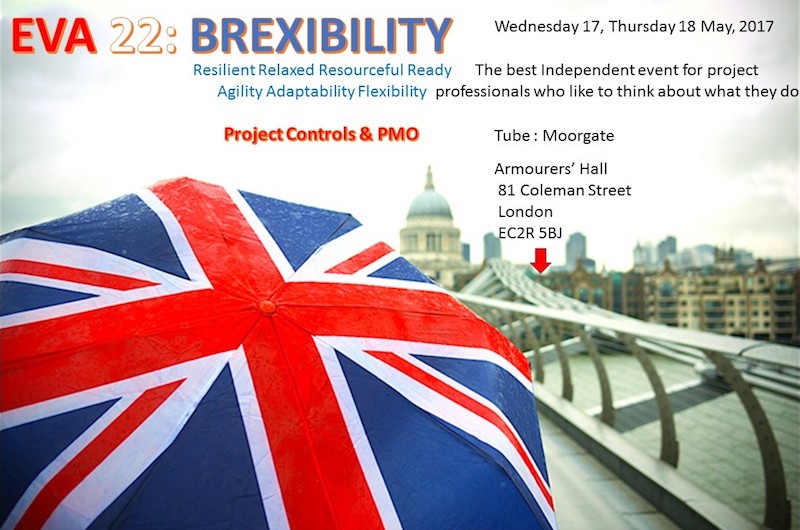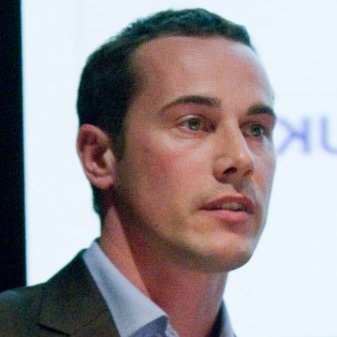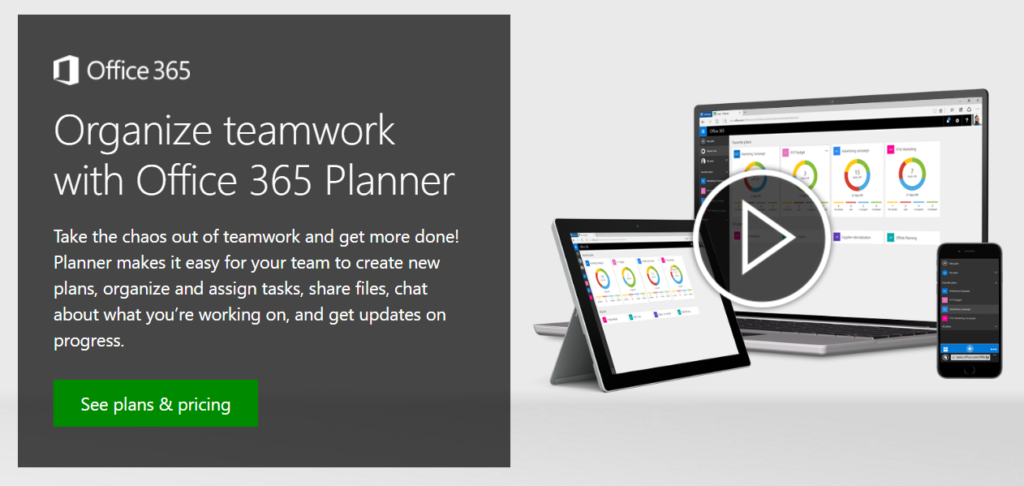Jack and his Band will do some practical well- being to help you Keep Calm and Carry On
Shane Forth Costain
Blazing the Project Controls Skills Trail
Summary: This talk will explain the long standing Project Controls Skills shortage that persists to this day and the ‘wake-up call’ to the engineering and construction industry that has led to the collaborative actions of senior project controls practitioners, sector and professional bodies and training organisations to raise the profile of project controls; including most recently the development of the newly launched Project Controls Technician Trailblazer Apprenticeship.
Shane Forth, Costain, ECITB

Shane Forth is Director of PMO for Costain Natural Resources, a Fellow of both APM and ACostE and an MSP Registered Practitioner, Shane has 41 years’ experience in Oil & Gas, Nuclear and Power & Process industries and is recognised externally by customers, peers and professional bodies as a project controls expert, sitting on national professional, technical and academic working groups. He has an MSc in Project Management awarded in 2013 from University of Manchester, and won the Stephen Wearne award for best overall performance followed by national acclaim, winning the APM Geoffrey Trimble award for best Master’s post-graduate dissertation. For the last 25 years, Shane has provided strategic and functional leadership in Project Management and Controls as a member of .senior leadership team at both global and divisional level including responsibility for the development and continuous improvement of project management assurance and project controls processes and systems. In the development of project controls people resource and competency to meet business needs, Shane has specified and delivered training through company Project Management Academies and been a driving force in the implementation of national project controls apprenticeship and graduate programmes, for which he has been honoured twice by the ECITB including winner of a national award for individual leadership and significant contribution to training and development. Shane is currently Chair of the employer-led group developing the Project Controls Technician Trailblazer apprenticeship programme.
Catherine Lambert, ECITB
Catherine.Lambert@Ecitb.org.uk

Catherine Lambert is an experienced manager with product development, project management and stakeholder engagement expertise. In the last four years she has brought company project controls experts and training organisations together to create a successful, pro-active Industry-wide Project Controls Working Group. This Working Group has developed: quality Vocational Qualifications that meet the needs of industry; comprehensive training standards that specify the correct discipline-specific technical knowledge and techniques essential for the continued successful delivery of project control, cost engineering, estimating and planning by UK-based companies; and a new Project Controls Technician Apprentice Standard that is ideal for those embarking on a career in this field. There is now a range of qualifications, apprenticeships, training products and a career path that together are increasing the attractiveness of Project Controls as a place to start and develop a successful career. Catherine continues to support the Working Group in ensuring its important contribution to the project controls profession is recognised industry and UK-wide.
Terri Harrington
Mark C Robinson
Mark C Robinson, Head of Business Performance A350XW, Airbus SAS
Summary:
‘Don’t boil the Frog’ – disruption and digitalization
Mark takes a candid look based on his personal experience of the effect and future impact of disruption and digitalization on the PM profession. What he terms the ‘Extinction event’

Mark is a highly experienced Programme Manager and Chartered Engineer of complex transnational Projects/Programmes in the Aerospace and Defence Industry and graduated from the school of ‘Pragmatic Programme Management’. Also holds an MBA from Cranfield University
In his current role he is accountable for the Business Performance Management of the new A350XWB family of Aircraft. Scope includes Programme Ramp-Up enablement, Business Improvement Platform, Cabin and Customisation and Process Methods and Tools including Digitalisation. He lives and works in Toulouse South West France and loves to eat the local speciality – Duck !
‘We make it fly’.
Airbus makes the freedom of flight possible by designing, manufacturing and supporting the world’s best jetliners. Its people around the globe are united by a passion for aviation, as well as their desire to create better, more efficient ways for airlines and passengers to fly.
Commercial Aircraft is a core business of Airbus – a worldwide leader and Europe’s largest aeronautics and space company – which also incorporates divisions specialised in space and defence, as well as helicopters.
Mark C Robinson
Head of Business Performance A350XWB
31707 Blagnac Cedex
FRANCE
Tel +33 (0) 567195432
mob +33 (0) 625982508
e mail mark.robinson@airbus.com

eVa22
eVa22 – Brexibility
The best independent event for the project professionals who like to think about what they do!
Conference: 17-18 May 2017
Armourers’ Hall 81 Coleman Street, Moorgate, London, EC2R 5BJ

Brexibility: This year EVA focuses on the New Normal. A fantastic place for a kick-start and a reboot of Project Controls in your career, your projects and your life.
There is nothing better than a perceived crisis to make people get serious. In times of prosperity many of you will have seen how slack and undervalued Project Controls and Governance can be. But we have entered a window of opportunity to have another go at getting things right.
Governance that really does join projects to portfolios. In an agile flexible way.
Project Controls central to the PMO toolset, properly managed and executed. A proper career path with some qualifications!
Performance Management which is understood implemented and used.
Getting your voice heard, your input sought and valued. There has never been a better time to prove your worth, to get the attention of the people at the top. Or you might be at the top wondering whether to jump. Come along talk listen learn discuss and see where it leads you.
As ever, #eVa22 will be different, entertaining and informative. Dinner will be served in the Hall by candlelight.
Attendees are middle to very senior professionals with interests in project management generally, project controls, earned value and wanting to learn more about wider issues of transformation, successful change and benefits-driven portfolios.
They will also be very keen to set Project Controls onto a formal career path this year and are looking for like minds who will lobby for and champion this, as well as networking and business leads.
Government Defence Aerospace Construction Utilities Transport Power Generation and IT sectors are represented.
All eVa conferences are filmed for web broadcast by the PM Channel as well as support from the trade press and social media.
Sponsors will each be allocated a clear space, power supply and either a table or stand space on the networking area where delegates network between sessions in the pre-conference, mid morning, lunch and afternoon breaks and during the break out sessions.
Main and Gold sponsors may erect suitable stands. Sponsors will be able to distribute brochures to all delegates. Erection of stands will be early morning on the day of the event or previous day by arrangement.
Every sponsor’s logo will appear on all marketing and event documentation produced by the organisers.
Paul Kidston Lee McDonagh Dan Wynne
Using Earned Value in the NEC contract
EVM is widely used throughout industry and the NEC is extensively used within infrastructure.Increasingly EVM and the NEC are being used on large infrastructure projects. The APM’s Planning, Monitoring & Control (PMC) Special Interest Group (SIG) posed the question ‘can EVM work with the NEC?’ We say the answer is ‘Yes’ and this presentation presents some of the reasons why. This presentation provides an update on the efforts towards a white paper that is planned to be presented in the autumn of this year.
Paul Kidston, Costain

Paul Kidston is currently the Project Controls Director for Costain. He has spent the last 15 years in leadership roles in the field of project controls and planning. Prior to that Paul was a Project Manager and has worked on many iconic construction projects including the rebuilding of the Tottenham Court Road Station, Crossrail, Smithfield Market and Paddington Station. Paul is the lead author of the APM’s best selling book, “Planning, Scheduling, Monitoring and Control” published in 2015.
Lee McDonagh, MACE

Lee is a Project Controls Director for Mace with over 20 years’ experience in the infrastructure construction industry. Currently he is seconded in to TfL delivering Project Controls for 4LM a £5.4bn signalling upgrade to the sub surface railway. Previously, Lee led the Programme Controls team for the Transformation of the Queen Elizabeth Olympic Park after the London 2012 games, ensuring that the project was delivered on time and on budget.
In Lee’s 20 year career he has had broad experience of engineering and planning a diverse portfolio of infrastructure projects from widening the M25 motorway, constructing a station on the Jubilee Line Extension, extending an airport terminal and delivering the London 2012 Olympic and Paralympic Games.
Dan Wynne, Gardiner & Theobald LLP

Daniel has over 20 years major infrastructure experience working alongside major clients, delivering both transformational projects and change programmes to improve total client and supply chain capability. During this time he has worked on some of the UK’s largest infrastructure programmes, often undertaking roles in the disciplines of project and programme management.
Daniel has experience in aviation, rail, defence, highways, utilities, pharmaceutical and in both the establishment of PMO’s and the review of the efficiency of existing client organisations.



Back to Conference programme
Sandi Rhys Jones
Sandi Rhys Jones
Constructive Women

Compulsive builder and advocate for construction and engineering, and in particular the role of women, Sandi Rhys Jones has nearly forty years experience in strategic marketing and management, communications and training for technical, professional and business to business organisations. Since co-founding RhysJones Consultants in 1976, she has worked for a wide range of clients, including consultants, contractors, suppliers, representative organisations, local and national government. As well as running her business she leads the national mentoring programme for the Association of Women in Property and is a member of the Seamore project board at the National Museum of the Royal Navy, tasked with delivering an innovative centre for Discovery and a new home for the Royal Marines Museum. She is increasingly in demand as a coach and mentor, particularly for women in non-traditional occupations, and also as a chair and facilitator at conferences, workshops and seminars. The Constructive Women blog draws on her working life. Parallel Universe reflects the other side – wife, mother, grandmother, cook, gardener, traveller, music lover.
Agility Engagement and Success in Managing and Delivering Change
Project & Portfolio Management is all about managing and delivering change
Chris Pond , Senior Solutions Specialist for PPM at Microsoft, who will be speaking at Bringing Projects to Life on 17 June reflects on his experience of Project and Portfolio Management.
, Senior Solutions Specialist for PPM at Microsoft, who will be speaking at Bringing Projects to Life on 17 June reflects on his experience of Project and Portfolio Management.
In the 18 years that I have been in the industry, from supporting customers with change initiatives through to delivering supporting tools, the market has changed considerably.
In the 90s we had the big players in Artemis, Primavera and ABT, with Microsoft Project starting to gain traction on the desktop. My first introduction was Project 4.0, while the first central project repository toolset from Microsoft was launched in 2000.
More recently we have the advent of “born in the cloud” task / work / project management tools. One of the benefits of these tools, has been an increase in understanding that to enable repeatable success in an organisation, we need to improve how we plan and execute our projects.

There are three recurrent themes we use when speaking to customers
1. Agility 2. Engagement 3. Success
Agility
Many of the customers I speak to want to discuss Agile. The first part of this conversation depends on the capability of the customers and what they really mean, as the term “agile” is regularly used interchangeably:
- agility (with a lower case “a”) as in the ability to move quickly and easily;
- and Agile (with an upper case “A”) which is a methodology and set of practices aligned to the Agile manifesto.
The term “bi-modal IT” is also regularly being added to the conversation. This was first described by Gartner in 2014, and is outlined in their glossary.
Bimodal IT is the practice of managing two separate, coherent modes of IT delivery, one focused on stability and the other on agility. Mode 1 is traditional and sequential, emphasizing safety and accuracy. Mode 2 is exploratory and non-linear, emphasizing agility and speed.
In the world of Project & Portfolio Management this might be considered by customers as:
- Mode 1: Waterfall based planning (old and boring?)
- Mode 2: Agile (new and exciting?)
My experience is that life is not as binary as described above, and that this is not a new scenario, simply one that has been simplified and concentrated down to two bullet points.
Not all aspects of a project support are delivered through an Agile approach. It’s important that we take the best and most practical parts of project management and use them to support repeatable success.
Combining these two approaches reminds me of a customer that I worked with over ten years ago. This customer wanted to use the tools at their disposal to support delivery of a project that included software development using Agile methods. In this scenario the customer was using Microsoft Project and Project Server.
We deployed an approach where the Project Manager owned the overall delivery schedule, while the development team had a separate, but connected schedule, that allowed them to track the sprints and deliverables. This enabled easy visibility of progress of the project portfolio, and significantly reduced the burden of reporting via multiple Excel spreadsheets.
 If you would like to read further, the Microsoft Project User Group [MPUG] has a great article about using Microsoft Project / Project Online to support delivery of Agile projects:
If you would like to read further, the Microsoft Project User Group [MPUG] has a great article about using Microsoft Project / Project Online to support delivery of Agile projects:
In 2016 we have various tools specifically designed to support Agile methods of delivery, including Microsoft Visual Studio Online. Used in combination with Microsoft Project Online, this can provide a holistic view of status across your project portfolio, saving time and providing real insight to support fact based decision making.
To find out more about Microsoft’s future vision for Project & Portfolio Management, watch this video
Engaging the whole organisation
Project & Portfolio Management, while impacting the whole organisation in terms of what it delivers, is typically utilised by c. 1%-15% of an organisation (depending on the industry).
This leads us to a question – how is the remainder of the organisation managing their work?
In a typical organisation, task/work management is handled in the following unstructured ways:
- SharePoint / Outlook tasks
- Excel
For these users, project management techniques and the use of Microsoft Project may be more than they require.
This brings us back to the first area of discussion – “born in the cloud” task / work / project management tools. There are 100’s of these tools available on the internet. Microsoft has recently launched Office 365 Planner, which is available as part of the Office 365 Enterprise licenses E1/3/4/5 (including Educational, non-profit and Government Office 365 tenants).
Office 365 Planner makes it easy for teams to create new plans, organise and assign tasks to individuals, share files, chat about what they’re working on, and get updates on progress. It can also be used to manage a marketing event, brainstorm new product ideas, track a school project, prepare for a customer visit, or just enable teams to organise more effectively.
It’s often said “tidy desk / room etc., tidy mind” – what does that mean?
Keeping your workplace tidy does more than just simplify finding important items and documents. When your desk and work environment are tidy and orderly, your mind is more likely to be focused, productive and free of mental clutter. [See full article Tidy House, Tidy Mind]
That’s where Office 365 Planner comes in to play – by enabling teams to get started quickly, work together without chaos and always stay informed.
If you would like to know more – click on the image below to watch the video
Success
All the successful deployments of processes and tools I have witnessed have had one thing in common; the super successful deployments keep things simple, and provide a solid foundation to be built upon to enable additional change over time.
In a recent article in Wired magazine regarding cyber security, Ciaran Martin, GCHQ’s DG of cybersecurity said the following:
“It’s more important to focus on making procedures simple and accessible. It is better to design systems that may be less secure in the abstract, but more likely to be implemented to a decent standard.”
The sentiment rings true for any process deployment (shortened by me) See full article “Keep yourself safe with these cybersecurity tips from GCHQ
What you can see is that there are ways to engage the majority of an organisation in planning in more structured ways – without individuals feeling overburdened.
This inclusive approach can lead to greater insight and improved decision-making through shared experiences, while cutting the time spent on collaborating via Excel, task lists and email. And of course, repeatable success.
>> See full conference programme <<
How do PMOs make Benefits Management Happen
In the State of the PMO UK Survey by Wellingtone and APM PMO SIG [published January 2016], Benefits Management was reported to be the hardest part of a PMO structure to successfully embed in an organisation.

The way I see it, there are a number of options for PMOs of any scale and type to achieve success in the Benefits Management space.
Control Everything: from project inception to closure and realisation
Supporting the team in defining benefits and measures, tracking opportunities, and facilitating the realisation reporting. This is tantamount to PMO doing benefits management in its entirety, and does carry with it a significant overhead of time and resources to manage effectively. Maybe this approach would suit a large scale Enterprise PMO?
Beginning and End View: focusing on the what and the when of Benefits realisation
Helping to define up front means that initially benefits are properly identified and defined and aren’t double-counted – a real problem in benefits management. However, if the project changes, PMOs may have to ‘dip in and out’ of the project on an ad-hoc basis – rather more often than they would like!
This ‘gap’ in the project life-cycle leads to a lack of ‘benefits visibility’ for the PMO – often mirrored in the Project Team. When things change, as inevitably they will, reviewing the benefits tends to fall through the cracks.
Define Key Touch points: for the PMO to work with the Project Team to identify, execute and sustain throughout the life-cycle
The formality of this approach helps the PMO to keep the Project Team focused on the end goal. However, it can also mean that as changes occur, the time to adjust can take longer due to a built-in lag in before the benefits logic is re-validated or plans re-profiled.
One thing is certain – whichever PMO structure is selected the post-project facilitation of benefits is KEY to making things work!
However, following the closure of a project, team members tend to go their respective ways, leaving the accountable owner[s] responsible for tracking benefits.
Now, I don’t know about you but, the accountable owners that I know are usually senior in the organisation and therefore; busy, involved with multiple projects and wearing many hats. Do they really have time to track all the benefits and chase information relating to the benefits of their projects? I don’t think so!
Is it any wonder, with the odds so heavily stacked against accountable owners tracking the benefits, that benefits don’t get tracked?
Enter the PMO
The PMO is well placed to collaborate with their peer teams [e.g. Finance and HR] to facilitate monitoring and reporting of post-project or programme benefits. This simple step adds enormous value to accountable owners and the organisation as a whole, as they come to see the PMO as a trusted business partner providing, amongst many other things, benefits realisation services.
Arguably, a similar options-driven approach to other project disciplines [e.g. risk or project accounting] will help to successfully embed other parts of the PMO structure in organisations.
 Emma-Ruth Arnaz-Pemberton, Chair of APM PMO SIG will be sharing the stage with Reinhard Wagner, IPMA President as they present on ‘The Rise of the Enterprise PMO’ at Bringing Projects to Life on 17 June.
Emma-Ruth Arnaz-Pemberton, Chair of APM PMO SIG will be sharing the stage with Reinhard Wagner, IPMA President as they present on ‘The Rise of the Enterprise PMO’ at Bringing Projects to Life on 17 June.
Emma says “It’s going to be a great couple of days and I’m really looking forward to learning together with an international cast of practitioners and thought leaders.
Why not come along and add your own thoughts to the mix – it’s all about the newest thinking; who says you don’t have the next big idea?”
Delivering business value with DSDM
 Hugh Ivory, Founding Partner at AgileSphere, is an Agile Coaching and Programme Management Consultant.
Hugh Ivory, Founding Partner at AgileSphere, is an Agile Coaching and Programme Management Consultant.
He recently spoke about the DSDM approach to project management with Martin Jordan at Public Sector Focus magazine. [See transcript below]
Hugh will be speaking at Bringing Projects to Life #eVa21 on 16 June.
What is different about the DSDM approach to project management?
The DSDM approach is based on the philosophy that everything we do should be focused on delivering business value.
Agile Project Management provides a framework for delivering what the user needs. The following elements differentiate this from traditional approaches:
- Do just Enough Design up Front; don’t waste time seeking false certainty – there are some things you just can’t know today
- Develop iteratively and deliver incrementally. Welcome feedback and change, don’t try to limit it
- Build a team that has everything that it needs to succeed
- Business knowledge and empowerment
- The right people
- Budget
- The Project Manager is a Servant Leader, creating the space for the team to deliver – not a command and controller
- Fix Time and Cost [Timeboxes, Releases] vary Scope
- Provide an adequate demonstration of Control [Time, Cost, Scope, Quality, Risk]
Does the challenge of public sector project management differ from commercial organisations? If so how?
- The challenges are the same – but perhaps they manifest themselves in different ways.
- Smaller commercial organisations can be more adaptive simply by virtue of their scale – because decision makers are much closer to product and service delivery, and can react to feedback much more quickly. Larger commercial organisations are striving to be like this, through being flatter and empowering the people who really know the service with funding and responsibility.
- The challenge for larger organisations, including government, is to create the conditions whereby product and service delivery teams can take feedback, make quick decisions and get on with delivery, without the distractions of heavy governance frameworks. This is difficult in government, where budgeting and decision making processes, and the need for public accountability can stifle innovation at pace. These are issues which need to be addressed if Agile in government is to succeed.
In your opinion, should the customer be as important in a public sector project as they are in a commercial project?
- As a citizen, I want public services to be just as easy to access and use as the services I get say from my bank or on-line bookstore.
- The Government Digital Strategy, and the Digital by Default approach, is a significant initiative in putting the citizen at the heart of service delivery, and has placed the UK at the forefront of citizen service delivery across the world. This is not widely appreciated in the private sector, and organisations could benefit from having a better understanding of this.
What are the implications for a project if the customer or service user is ignored and what implications would that have for the public sector? Can you give any examples of good or bad customer experience?
- Put simply, ignoring the customer or user will result in the delivery of the wrong thing, that will not deliver the desired business outcome.
- Some research that I’ve been involved in has shown a strong correlation between failure to meet user needs and high operational costs. For example, if we are not clear with citizens what documentation they need to provide to effect a transaction with government, they are likely to provide the wrong information, leading to unnecessary contact, excess documentation and multiple attempts before service outcomes are delivered.
With the emphasis on increased public sector digital service delivery, can you foresee any issues that could come to the fore?
- The level of spending on public sector projects, and the media and public accountability that surrounds it, means that it is important to provide assurance to the taxpayer that money is being well spent. However, our implementation of this has been through heavy governance frameworks, at significant cost in terms of money and time.
- Digital by Default and agile delivery demands a balanced approach to governance – light but effective, making use of the information radiated by the delivery teams to ensure that we are doing the right things in the right way (i.e. are we investing in the right things, are we spending that investment in the most effective way). The Government Digital Service has developed some relevant principles and guidance.
How can DSDM methodology assist public sector project delivery?
- Agile approaches provide the opportunity for Senior Responsible Officers to have real transparency of, and greater influence over, how their investments are being spent. This brings with it a responsibility to appoint and empower the right people to deliver change, and to take more time to see for themselves what is being delivered by visiting the teams regularly and participating in Show and Tells.
- The Agile Project Management framework defines the key roles and behaviours needed to underpin this, and sits very well with Digital by Default. With appropriate guidance, it can help public sector programmes which need to deliver digital services to implement effective agile governance:
- Feasibility and Foundations deliverables put some meat on the bones of what teams should be delivering from Discovery and early Alpha’s
- Roles and responsibilities are closely aligned to Digital by Default, and the team structures enable a simple but effective approach to scaling
>> Conference Programme <<





